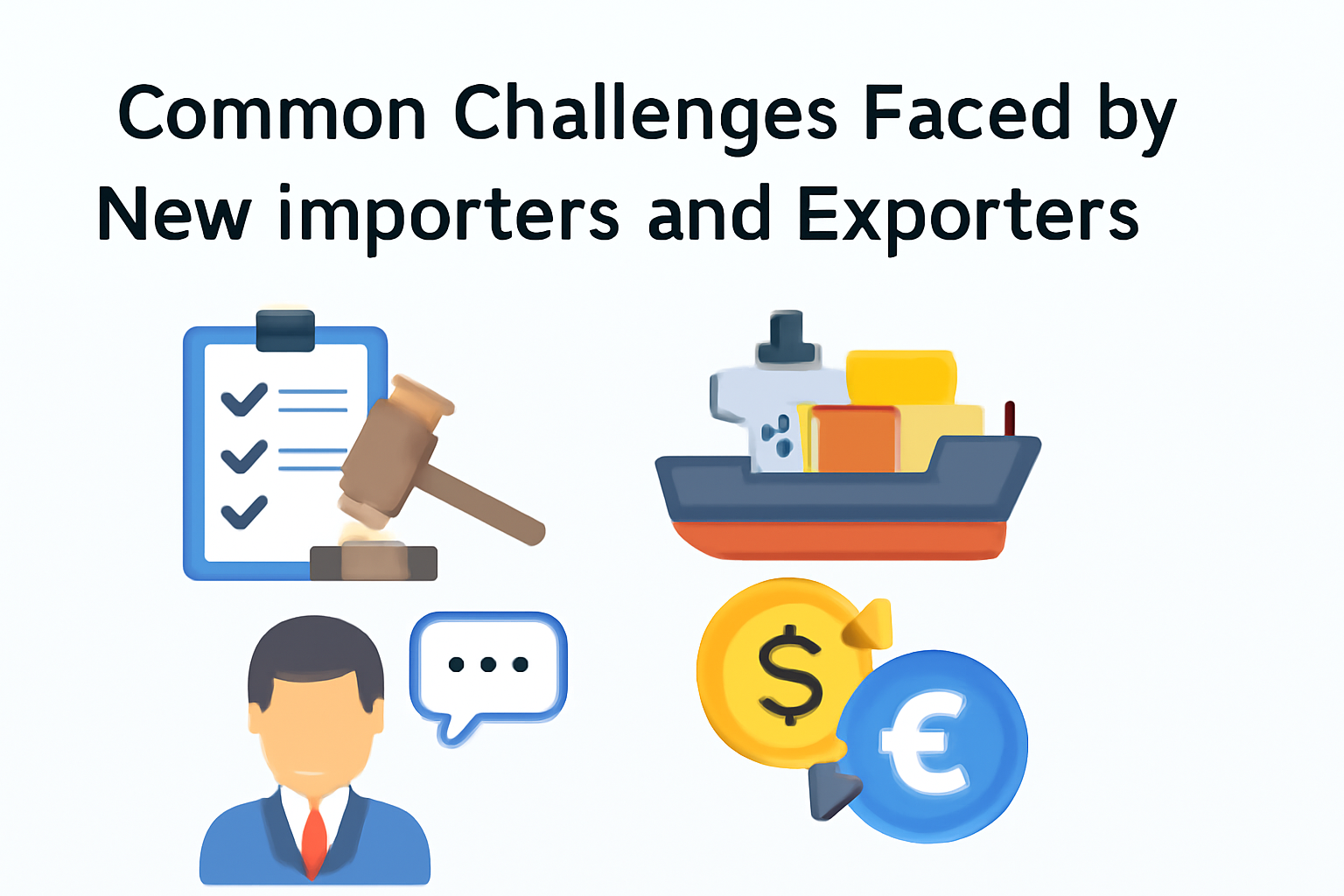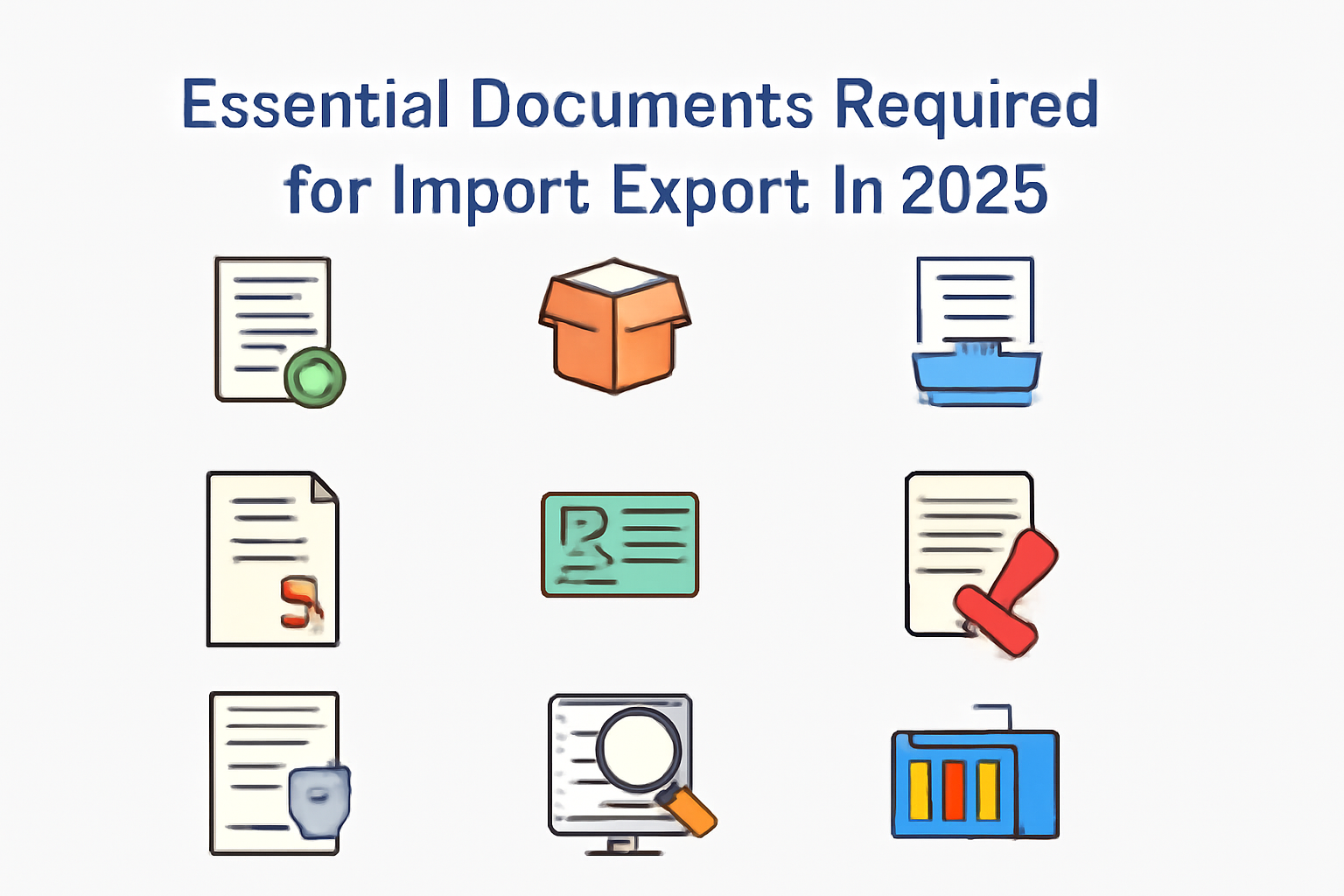
 Tue, 17 Jun 2025
Tue, 17 Jun 2025
Common Challenges Faced by New Importers and Exporters
Introduction
Starting an import/export business can be a lucrative opportunity, but new traders often face several challenges. From navigating customs regulations to managing payments and logistics, international trade is a complex arena that requires careful planning and execution.
In this blog, we’ll highlight the common challenges that new importers and exporters face, and offer practical solutions to help you overcome them.
1. Navigating Customs and Regulatory Compliance
One of the biggest challenges in international trade is complying with customs regulations. Each country has its own set of rules for importing and exporting goods, and failing to meet these requirements can lead to delays, fines, or even confiscation of goods.
Common Issues:
-
Lack of knowledge about import/export licenses and documentation.
-
Failure to comply with tariffs, taxes, and customs duties.
-
Confusion around HS codes for product classification.
Solution:
-
Research the customs regulations of both the importing and exporting countries.
-
Work with a customs broker to ensure all required documentation is filed correctly.
-
Stay updated on tariff changes and trade agreements that may affect your goods.
2. Managing Logistics and Shipping Costs
Shipping goods internationally involves navigating a maze of logistical issues. Whether you're shipping by sea, air, or land, it’s crucial to factor in the cost, timing, and risks of shipping.
Common Issues:
-
Rising freight costs and fluctuating shipping rates.
-
Delays in transit or damaged goods due to poor packaging.
-
Choosing the wrong shipping terms (FOB, CIF, etc.) that result in higher costs.
Solution:
-
Choose a reliable freight forwarder to handle the logistics.
-
Always opt for proper packaging and insurance to protect goods during transit.
-
Understand shipping terms and ensure they align with your business needs.
3. Currency Exchange and Payment Risks
When dealing with international transactions, managing currency exchange rates and ensuring secure payments can be a significant challenge.
Common Issues:
-
Currency fluctuations that affect pricing and profit margins.
-
Payment delays or fraud, especially when dealing with unknown buyers or suppliers.
-
Lack of understanding regarding international payment methods (e.g., Letter of Credit, wire transfer, open account).
Solution:
-
Use forex hedging tools to minimize the risk of currency exchange fluctuations.
-
Implement secure payment methods, such as Letters of Credit (L/C), to protect both parties.
-
Work with trusted financial institutions to handle cross-border payments.
4. Dealing with Language Barriers and Cultural Differences
When trading internationally, language barriers and cultural differences can hinder effective communication and smooth business operations.
Common Issues:
-
Misunderstanding product specifications or terms of sale.
-
Negotiating with buyers and suppliers from different cultural backgrounds.
-
Delayed responses due to language-related misunderstandings.
Solution:
-
Consider hiring a professional translator or interpreter for critical communications.
-
Educate yourself and your team about the business culture of the countries you’re dealing with.
-
Build a network of local partners to facilitate smoother communication.
5. Finding Reliable Suppliers and Buyers
Identifying trustworthy partners in international trade can be a challenging task, especially for newcomers who are unfamiliar with the global market.
Common Issues:
-
Scams or fraudulent companies posing as reliable suppliers or buyers.
-
Difficulty in verifying the credibility and reliability of partners.
-
Problems with the quality of goods received or shipped.
Solution:
-
Perform thorough background checks on potential suppliers or buyers.
-
Attend trade shows and industry events to meet reputable partners.
-
Use B2B platforms like Alibaba or Global Sources to connect with verified partners.
6. Understanding Local Regulations and Compliance Issues
While navigating global regulations is essential, each country also has local laws that affect international trade. For example, certain products may be restricted or subject to import/export bans.
Common Issues:
-
Not understanding local regulations and their impact on trade.
-
Problems with product certifications required by local authorities.
-
Non-compliance with local labor laws or environmental standards.
Solution:
-
Always research the local regulations of the target market.
-
Work with local experts or compliance consultants to ensure your products meet all required standards.
-
Join industry associations that provide up-to-date information on compliance.
7. Economic and Political Instability
Political instability or economic uncertainty in the target market can impact your trade operations.
Common Issues:
-
Government changes or political unrest affecting trade agreements.
-
Economic downturns or sudden currency devaluation.
-
Difficulty in predicting market demand due to economic volatility.
Solution:
-
Diversify your markets to reduce dependence on any one region.
-
Stay informed about the political and economic climate of the countries you’re trading with.
-
Be flexible in adjusting your pricing and business strategies according to market conditions.
Conclusion
While import and export can be highly rewarding, it’s crucial to be aware of the challenges involved. From dealing with customs compliance and shipping logistics to managing currency fluctuations and cultural differences, new importers and exporters need to be well-prepared for the complexities of international trade.
By understanding these common challenges and proactively addressing them, you’ll be better positioned to succeed in the global marketplace. Keep learning, stay informed, and always be prepared to adapt to the dynamic world of international trade.
For more expert tips and insights on overcoming trade challenges, visit naviexports.com.
Also Read
How to Start an Import Export Business: Step-by-Step Process




